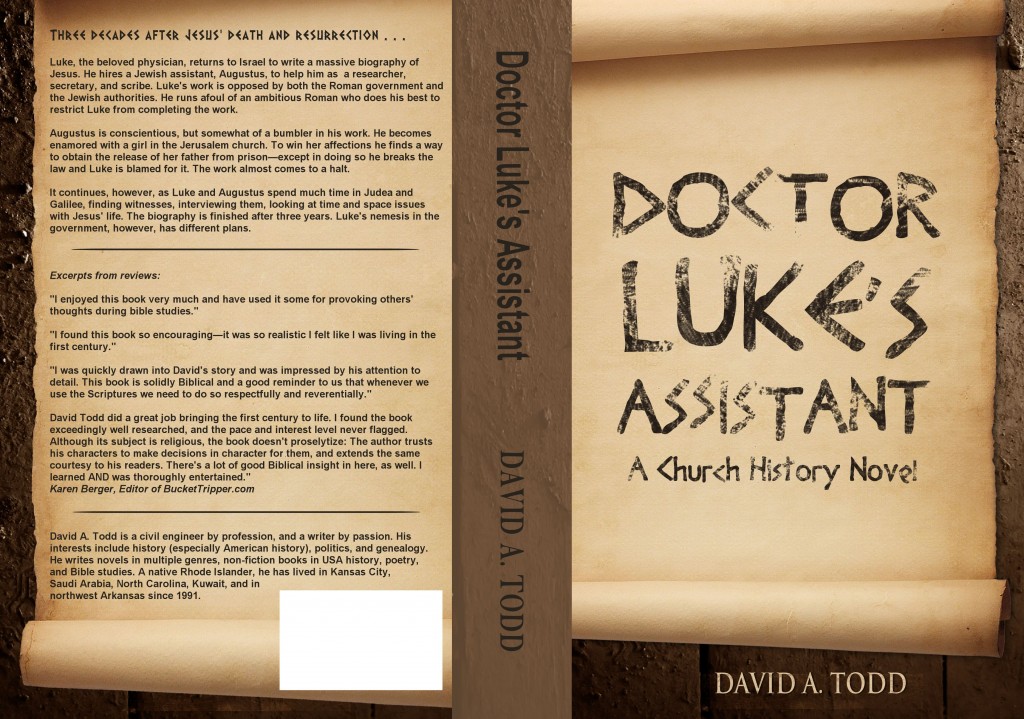One website/blog I monitor with some degree of regularity is Joel Friedlander’s The Book Designer. Joel is very big on taking great care in the interior design of a book. He encourages people to use a high-end program, such as InDesign, to create the interior. He does acknowledge, however, that the standard Microsoft Word is going to be used by many or most self-publishers, and so he has done some work with that.
One thing Joel encourages is that the book text be fully justified—that is, that the text be flush against both the left and right margins. This leads to decisions and action needed to avoid the odd spacing that comes from justification. When my dad set type for The Providence Journal, he would handle this with hyphenation and spaces of different size, all with a hot-lead typesetting machine. Today Word does a lot of that. You can set hyphenation zones, and you can even tell it, to some extent, how to adjust spaces.
Another caution Joel warns about is eliminating “rivers” of text, often called “ladders.” You probably know what I mean. This is when the white space between words aligns in a mostly vertical pattern between lines. It tends to capture your eyes and pulls you away from reading. This can be solved, says Joel, with careful attention to typesetting techniques, including adjusting word spacing, changing hyphenation from what may be optimum, and in some cases kerning or compressed type on a word or two.
Along the way Joel also talks about widows and orphans—not the people, but the single lines of text at the bottom or tops of pages that are cut off from the rest of the paragraph. You can fix those easy enough, but then you might have a “spread” (i.e. two pages of a book facing each other) with the last lines not aligned with each other. Again, techniques are available to solve the widows and orphans problem without creating the spread problem.
It seems to me, however, that all of these (except maybe widows, orphans, and spreads) are solved by simply not right justifying the text. Let it be a ragged right edge. What’s so awful about that? The spacing between words is constant, as it is between letters. This is the most comfortable reading. When spaces vary between words to allow the right side of the text to be all at the same vertical line, reading can be more difficult. It takes a very skilled typesetter to adjust those spaces and hyphens so that the text justifies and the comfort of reading is not diminished.
It further seems to me that the most important thing in laying out a book is to make the reading easy. Margins, text size and spacing, the presence of page numbers and running heads—all of these make reading the book easier. Right justification makes it harder. So why do we right justify?
My three print books so far [Documenting America, The Candy Store Generation, and Documenting America, Homeschool Edition), are all left justified, ragged right text. I did it that way because it was easier to typeset and because it is the most comfortable reading, with the latter reason being the main one. Full justification is possible with Word, but I decided against it. I don’t even hyphenate words with the ragged right text, which is possible, because I think hyphenated words detract from the comfort of reading. Joel would not approve.
When I was first making my decision concerning this, I made trips to both the library and Barnes & Noble to randomly check books for justification vs. ragged right. I found almost none that were ragged right. I found many that, with full justification, had awkward words spacing, hyper-hyphenation, and rivers of white space. They were distracting to read. The few that I found with ragged right were easy to read. And, to my eye, the text looked as attractive as fully justified.
So my question is why does anyone do justified text? My conclusion is that someone, possibly readers, probably printers, for sure typesetters, thinks is looks better that way on the page. Joel did a guest post at a blog and I asked that question. His answer: reader expectations. I’m not sure about that, however. I kind of think the readers don’t care all that much. Will they go to the bookstore, pick out a book for browsing, find the text ragged right, and put it down as something less than professional? Maybe, but I kind of doubt it. I doubt most readers will even notice.
This weekend I spent a couple of hours reading in Not A Fan, by Kyle Idleman. This is a book were are doing an all-church study in right now, with sermons and life group classes all using the book. I was well into my second or third hour of reading when I suddenly realized that the text was not justified: it was ragged right! With no hyphenation! I’m very attuned to that, and yet I was more than 50 pages into the book before I noticed it. If I didn’t notice it, I doubt anyone else did. This is published by Zondervan; it’s not a self-published book.
So how did Zondervan manage to typeset a book with ragged right, non-hyphenated text, and do it so well that it took someone looking for it over 50 pages of reading to notice? Why is this book selling tens of thousands of copies when it has what some would call an unprofessional layout? You can be sure I’m going to spend some time studying the layout and seeing what I can glean from it. I think I know what it is, but want to study some more before saying anything. The print version of Doctor Luke’s Assistant is in the mail to me right now, and the print version of China Tour is only about two weeks away from beginning production.
 But last night I completed the uploading process of Operation Lotus Sunday for the Kindle store. I worked on uploading the print version as well, but couldn’t complete the process. I completed it this morning. It’s now in the queue for checking. I hope that will be done by tomorrow, and I can order a proof copy.
But last night I completed the uploading process of Operation Lotus Sunday for the Kindle store. I worked on uploading the print version as well, but couldn’t complete the process. I completed it this morning. It’s now in the queue for checking. I hope that will be done by tomorrow, and I can order a proof copy.



